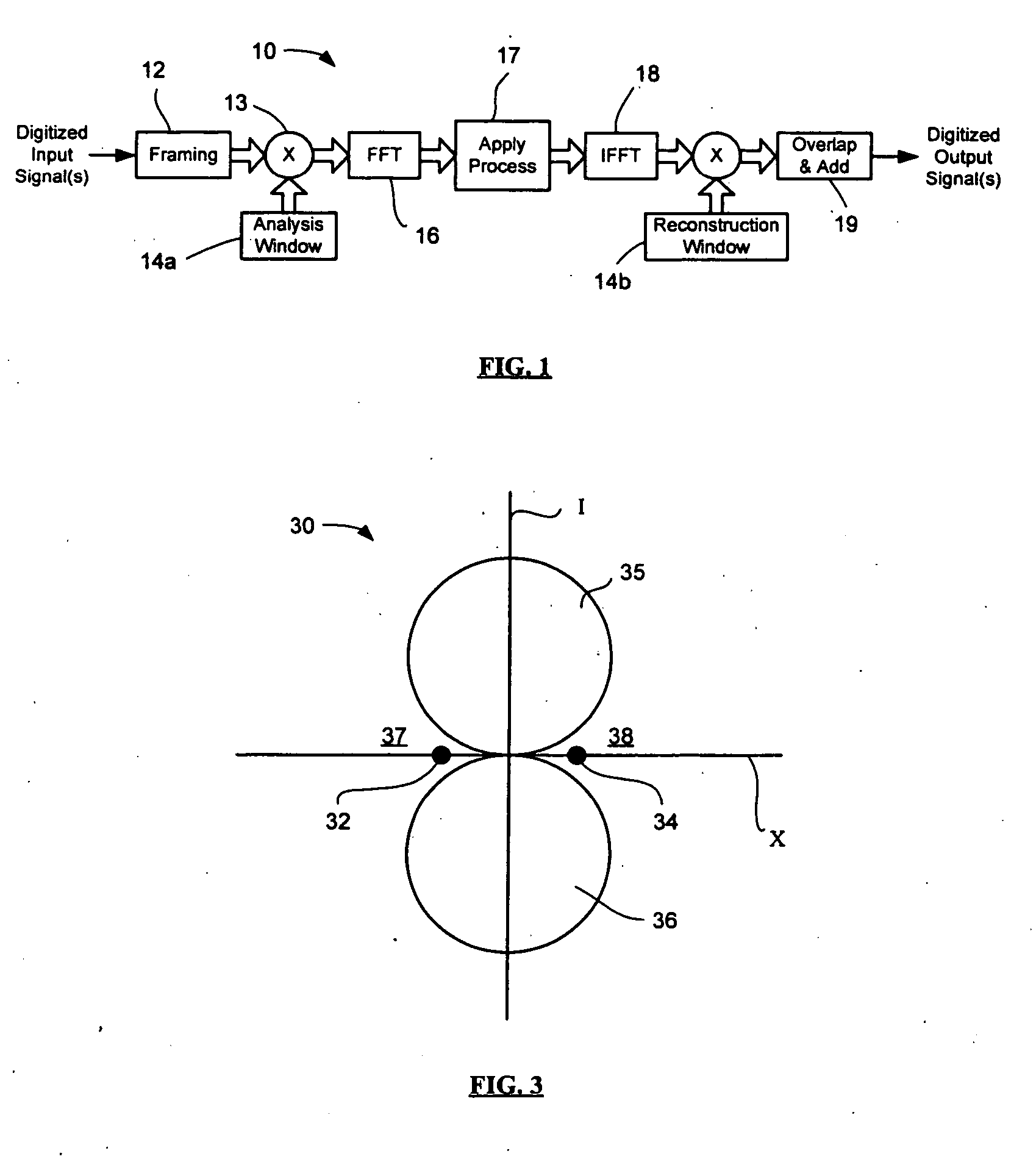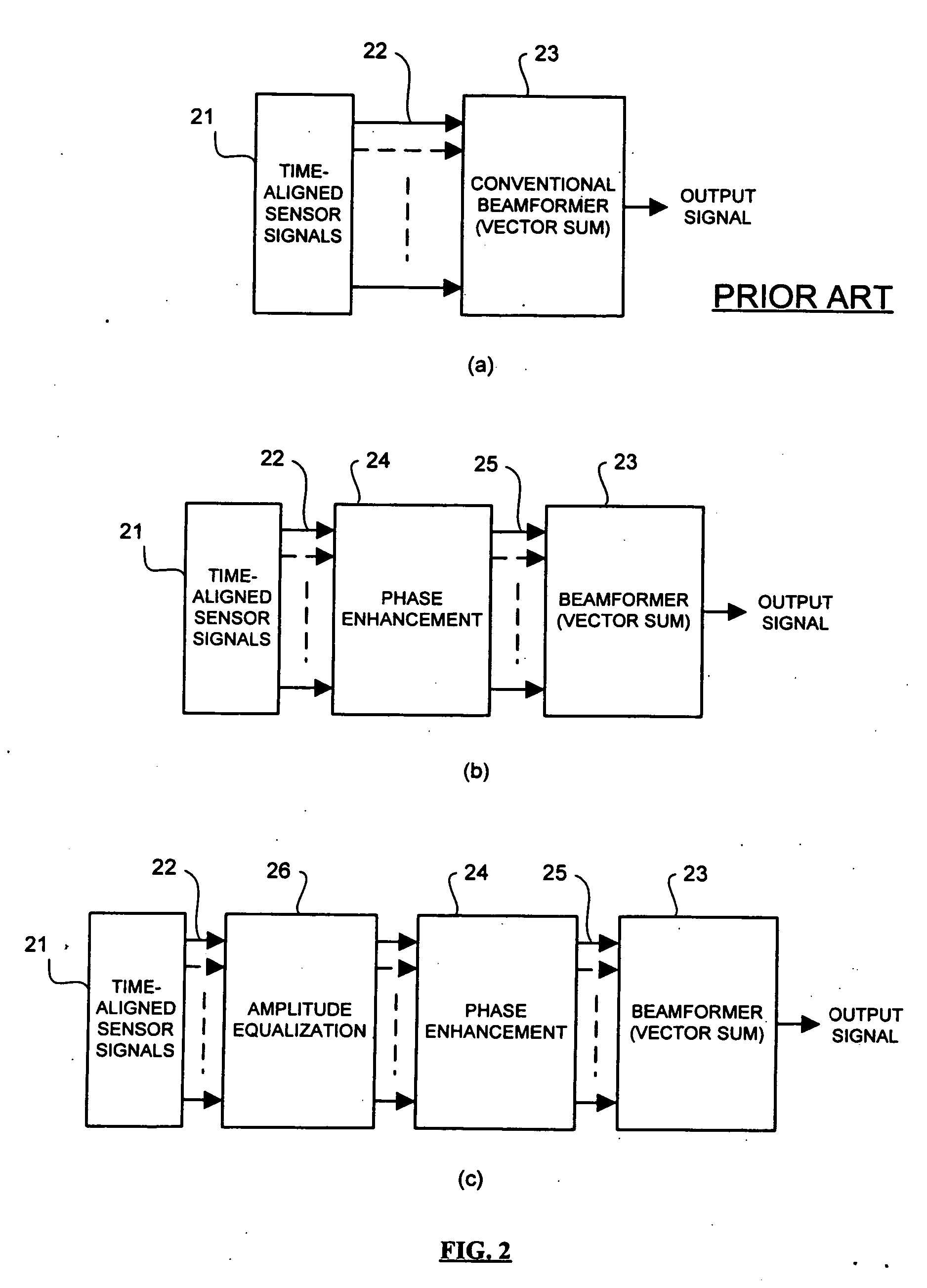Method & apparatus for accommodating device and/or signal mismatch in a sensor array
a sensor array and array technology, applied in the direction of sound producing devices, frequency to phase shift conversion, instruments, etc., can solve the problems of increased computational costs, accuracy compromises in analysis windows, and improved efficiency, and achieve the effect of improving noise discrimination
- Summary
- Abstract
- Description
- Claims
- Application Information
AI Technical Summary
Benefits of technology
Problems solved by technology
Method used
Image
Examples
Embodiment Construction
[0062] In accordance with an aspect of the invention, a novel approach based on enhancing the performance of beamforming systems is disclosed. As a general aim, an aspect of the invention operates on the principle of enhancing or enlarging the nulls of a beam pattern created by such a beamforming system.
[0063] The novel approach, in accordance with an aspect of the invention, is to widen the nulls—that is, regions 37 and 38 in FIG. 3—rather than to narrow the main lobes 35 and 36 of a beamforming system. This approach improves directionality, but by way of a unique and advantageous apparatus and method. By widening the nulls using the inventive method, the improved directionality is accomplished without increasing the number of sensor elements and associated amplifiers and A / D converters (in a digital system) or filters (in an analog system), with reduced computational costs for processing the sensor signals, with the result that the beam pattern is simple without added side lobes ...
PUM
 Login to View More
Login to View More Abstract
Description
Claims
Application Information
 Login to View More
Login to View More - R&D
- Intellectual Property
- Life Sciences
- Materials
- Tech Scout
- Unparalleled Data Quality
- Higher Quality Content
- 60% Fewer Hallucinations
Browse by: Latest US Patents, China's latest patents, Technical Efficacy Thesaurus, Application Domain, Technology Topic, Popular Technical Reports.
© 2025 PatSnap. All rights reserved.Legal|Privacy policy|Modern Slavery Act Transparency Statement|Sitemap|About US| Contact US: help@patsnap.com



